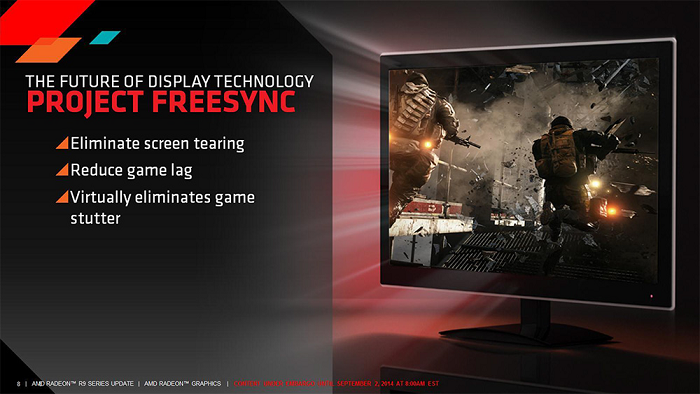Samsung is currently the second biggest LCD monitor manufacturer in the world and the company just announced that it will have at least five different monitors that will support AMD’s FreeSync technology.
FreeSync monitors should end up cheaper than G-Sync monitors but basically both are doing the same thing, synchronizing the GPU with the monitor and eliminating frame tears caused by monitor refresh rate synchronization. We saw it in action and both technologies make for a smoother playing experience.
Samsung plans to launch FreeSync compatible monitors in March 2015, starting with Samsung UD590 23.6-inch and 28-inch models and UE850 23.6-inch, 27-inch and 31.5-inch models.
This is a big win for this VESA-supported technology and for AMD gamers, as they will finally have an alternative to G-Sync. We would not be surprised to see monitors capable of supporting both G-Sync and FreeSync in the future, as it should be technically possible.

Some monitors above will end up with 4K 3840x2160 resolution which is definitely something that many gamers will be after, but unfortunately the refresh rate will be limited to 60Hz. If you prefer better refresh rates that are a few 144Hz and 2560x1440 resolution models, but they don’t come cheap. You have to make a tough choice between higher resolution and lower refresh rate versus lower resolution with much higher refresh rate.
A technology that eliminates stuttering or tearing on you monitor and gives you a smoother frame rates is a step in the right direction, but it will be up to consumers to make the choice - FreeSync or G-Sync, AMD or Nvidia. The fight continues and Samsung is now on board with FreeSync monitors.
We also heard from sources close to AMD, as well Richard Huddy, AMD Chief Gaming Officer, that there should be some FreeSync monitors showing up as soon as December. Let's hope they won't be expensive.




